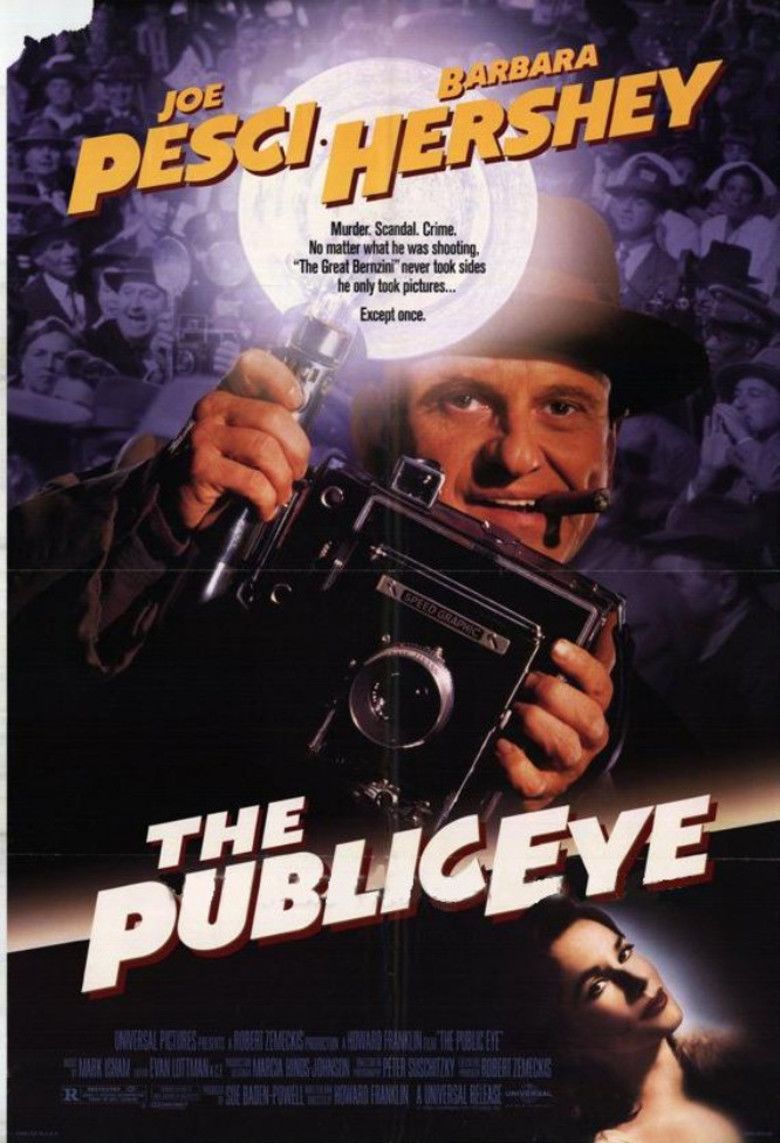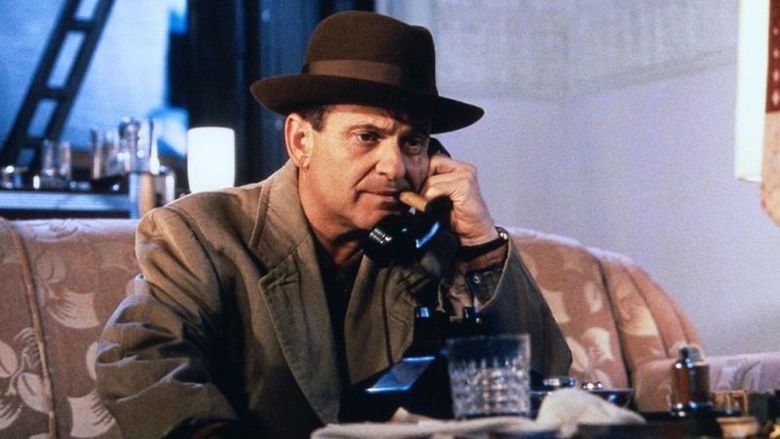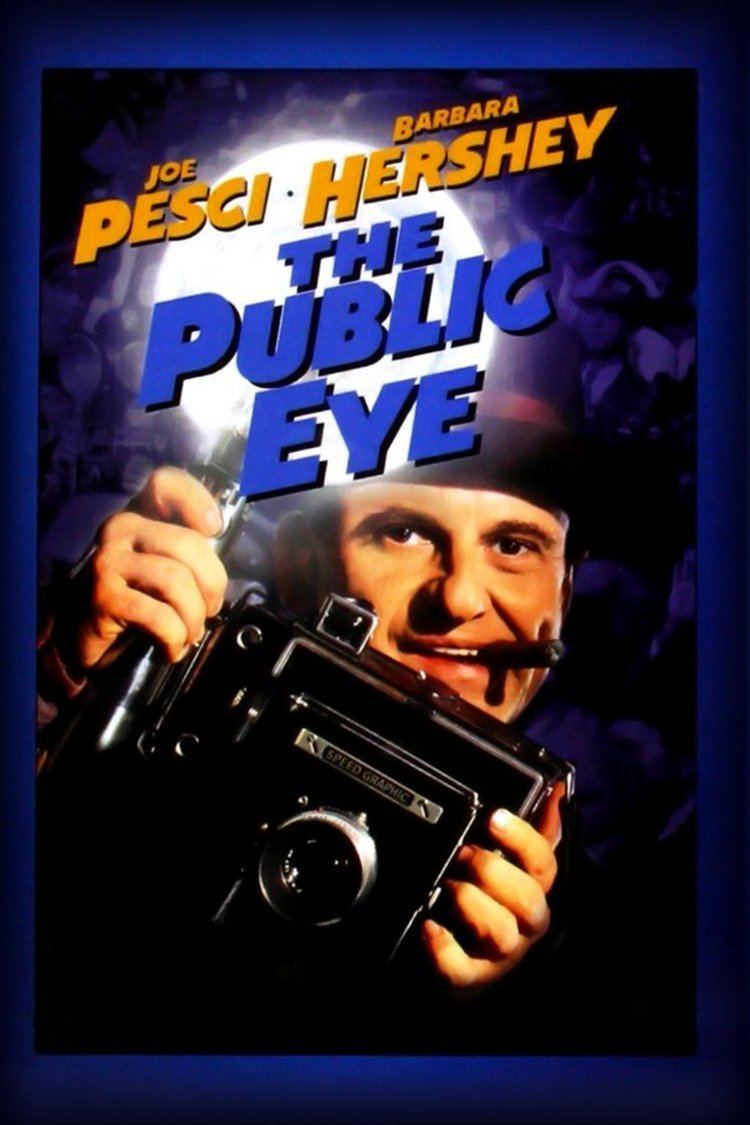The Public Eye (film)
6.8 /10 1 Votes
Initial DVD release April 14, 1993 Duration Country United States | 6.6/10 IMDb Genre Crime, Drama, Romance Budget 15 million USD Language English | |||||||||||||||||||||||||||||||||
 | ||||||||||||||||||||||||||||||||||
Release date September 15, 1992 (1992-09-15) (Toronto Film Festival)October 14, 1992 (1992-10-14) (New York City) Cast (Leon Bernstein), (Kay Levitz), (Officer O'Brien), (Sal), Bryan Travis Smith (Young Cop), (Teen at Thompson Street)Similar movies LA Confidential (1997) Tagline Murder. Scandal. Crime. No matter what he was shooting, "The Great Bernzini" never took sides, he only took pictures... Except once. | ||||||||||||||||||||||||||||||||||
The public eye trailer
The Public Eye is a 1992 neo-noir film produced by Sue Baden-Powell and written and directed by Howard Franklin, starring Joe Pesci and Barbara Hershey. Stanley Tucci and Richard Schiff appear in supporting roles.
Contents
- The public eye trailer
- The public eye 1992 trailer vhs capture
- Plot
- Cast
- Production
- Filming locations
- Distribution
- Home media
- Critical response
- Soundtrack
- References

The film is loosely based on New York Daily News photographer Arthur "Weegee" Fellig, and some of the photos in the film were taken by Fellig.

The public eye 1992 trailer vhs capture
Plot
In the 1940s, Leon "Bernzy" Bernstein is a freelance crime and street photographer for the New York City tabloids, dedicated to his vivid and realistic work and his unique ability to capture shots that nobody else can. He is very confident of his skills, declaring at one point, "Nobody does what I do. Nobody".
With a police radio under the dashboard of his car and a makeshift darkroom in his trunk, he quickly races to the scene of horrific crimes and accidents in order to snap exclusive photographs. He is so good at his job that he becomes known affectionately as the "Great Bernzini".
Bernzy meets a sultry widow, Kay Levitz (Barbara Hershey), who owns a fancy nightclub. It seems the mob is muscling in on her due to some arrangement with her late husband. Kay asks if Bernzy could investigate an individual she considers troublesome. Generally unsuccessful with women, Bernzy agrees to help Kay, and he slowly begins to fall in love with her.
After talking to his contacts, including journalist friend Arthur Nabler (Jerry Adler), he tracks down Kay's man, only to find him murdered. But when he calls the police, he becomes a suspect in the man's death. The police and the FBI are also very interested in this case. Bernstein makes a connection with a local gangster, Sal (Stanley Tucci), uncovering a conspiracy involving a mob turf war about illegal gas rationing, and the Federal government. His activities get Sal killed and place Bernzy's life in great danger as he waits in hiding at an Italian restaurant where a mob hit is about to take place.
Cast
Production
Joe Pesci took this role right after his Oscar-winning performance in Goodfellas. It was an attempt to capitalize on his popularity at the time and help elevate Pesci from respected character actor to star status.
Director and writer Howard Franklin was unable to secure the rights to Arthur "Weegee" Fellig's story. Franklin, then, wrote the story of a Weegee-like photographer who smokes cigars and he named him Leon "Bernzy" Bernstein. In the film, like Weegee, cops wonder if Bernzy uses a ouija board to snap his photographs and find the stories.
According to journalist Doug Trapp, Franklin was inspired to write the screenplay after seeing a show of Fellig's photos in the 1980s at the International Center of Photography in New York City. And Weegee did, in real life, have a "soul-mate" named Wilma Wilcox, who was the woman in charge of his estate. But, Franklin has always denied that the film was about their relationship.
Filming locations
Even though the film takes place in Manhattan, it was shot in Chicago, Illinois, Cincinnati, Ohio, and Los Angeles, California.
Distribution
The producers used the following tagline when marketing the film:
Murder. Scandal. Crime. No matter what he was shooting, "The Great Bernzini" never took sides he only took pictures ... Except once.The Public Eye began filming on July 24, 1991 and completed October 28, 1991.
The film premiered at the Toronto Festival of Festivals in September 1992. The film also was shown at the Venice Film Festival and the Valladolid International Film Festival in Spain.
It opened on October 14, 1992 in New York City and Los Angeles. It opened wide on October 16, 1992.
The film's box office performance was a disappointment. The first week's gross was $1,157,470 and the total receipts for the run were $3,067,917. According to "The Numbers" box office database the film was in circulation one week (5 days) in 635 theatres.
Home media
The film was released in video format on April 14, 1993 and in LaserDisc on April 21, 1993.
In September 2007 an Unbox Digital Video Download was made available. The movie is also available at Amazon.com as digital Video on Demand.
It was released on DVD on January 31, 2011 in the Universal Vault Series.
Critical response
Chicago Sun-Times film critic, Roger Ebert, was especially complimentary of the film and of actor Joe Pesci, and wrote, "One of the best things about the movie is the way it shows us how seriously Bernzy takes his work. He doesn't talk about it. He does it, with that cigar stuck in his mug, leading the way with the big, ungainly Speed Graphic with the glass flashbulbs. In the movie's big scene of a mob assassination, he stares death in the face to get a great picture." Ebert said the film made him "think" a little bit of Casablanca (1942).
Time Out magazine liked the acting and the script, and wrote, "The main virtue of screenwriter Franklin's debut as director is Pesci's portrayal of Weegee, the famous low-life tabloid photographer of urban disaster, lightly concealed as Bernstein, 'The Great Bernzini'... good dialogue, nice period recreation, great performances."
Desson Howe, film critic for The Washington Post wrote, "Public wants to be taken for an atmospheric film noir, full of intrigue, romance and street toughness. But it's all flash and no picture. Despite the usual quippy, perky performance from Pesci, as well as cinematographer Peter Suschitzky's moodily delineated images, the movie is superficial and unengaging. It's as if Life magazine decided to make an oldtime gangster movie."
Soundtrack
The original score for the film was written and recorded by Jerry Goldsmith but he was replaced by Mark Isham at a late stage. As such, Isham had a lot of work to do and in a short time. He found working with director Franklin a wonderful and educational experience.
A motion picture original soundtrack was released. Shorty Rogers also worked on the score and contributed 1 track. The CD contained nineteen tracks in total. The CD was released on October 13, 1992 on the Varese Sarabande label. Mark Isham uses a dark melody played mostly on piano. Isham mixes symphonic, jazz and electronic music; strings and trumpet also play a major role.
References
The Public Eye (film) WikipediaThe Public Eye (film) IMDb The Public Eye (film) themoviedb.org
